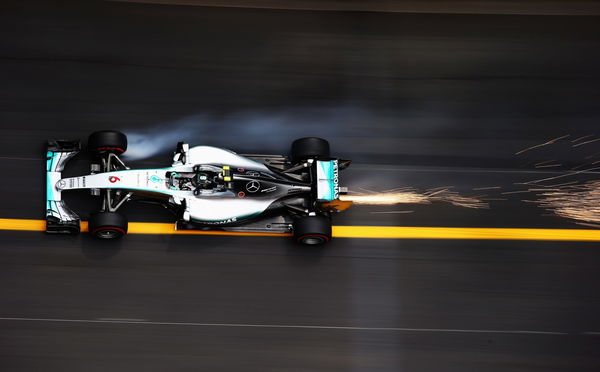Formula 1 Qualifying Formats Over the Years

Follow Us

via Imago
Nico Rosberg locks up during qualifying in Monaco 2015
Qualifying is, arguably one of the most crucial stages of a race weekend. Over the years, qualifying sessions have undergone frequent rule changes and modifications, in an attempt to bring the sport closer to the drivers as well as the fans.
In the wake of the FIA’s indecisiveness about F1’s latest elimination format, let’s have a look at some of the previous qualifying formats over the years:
The two session format:
ADVERTISEMENT
Article continues below this ad

via Imago
Mika Hakkinen drives around Spain in 1992
This format was predominant in all the post war races till 1996. Qualifying involved two sessions to set lap times- one on Friday and the other on Saturday, with the grid being determined by fastest laps over the two sessions. There was no fuel limit imposed during qualifying. A few alterations were made to this format as the years progressed.
One hour shootout (1996-2002):

via Imago
Giancarlo Fisichella- Benetton B198, Monaco GP.
The previous format seldom brought about a thrilling climax, especially when there was rain involved. In order to make qualifying more thrilling for the masses, a completely different format was implemented. The new system featured a 1 hour qualifying session, in which the drivers had a maximum of 12 laps to set their times.
This format didn’t quite work out, with many drivers choosing to go out in the very end of the session, when the track is properly rubbered, and the conditions are ideal. It was scrapped in 2002.
One lap qualifying (2003-2006):

via Imago
Micheal Schumacher- Ferrari F2005, Monaco GP
2003 saw the advent of one lap qualifying sessions. Originally implemented as a method to prevent drivers from sitting in their pits till the very end, this format saw each driver take to the track one at a time to complete a single lap, in championship order and return to the pits thereafter. Qualifying took place over two sessions, on Friday and Saturday, with the slowest driver on Friday starting first on Saturday, and the fastest driver going last. Also, to perk things up further, all drivers had to complete their second qualifying sessions on race fuel loads.
This system underwent a slight modification in 2004, with the running order in the first qualifying session established by the classification of the previous race.
Further tweaks followed in 2005, with the starting grid being decided by taking into account the aggregate of the times set on two individual laps- one on Saturday running low fuel and the other on Sunday with race fuel load.
The one lap qualifying format gave rise to a lot of issues. Due to changing weather conditions, certain drivers would be disadvantaged by the track conditions at a particular time. Also, the runs on the first session usually failed to generate excitement among the spectators.
Knockout qualifying (2006-2015):

via Imago
Jules Bianchi leads his teammate Marcus Ericsson during qualifying- Malaysian GP 2014
After 3 years of experimenting with single lap qualifying, F1 decided to revert back to it’s previously used multi lap qualifying system, albeit with a lot of modifications.
A completely altered progressive knockout system was chalked up to be implemented from 2006 onwards, with the slowest drivers being knocked out gradually across 3 segments of the qualifying session. Depending on the number of drivers taking part in qualifying, the slowest drivers would be eliminated in the first segment, and the 15 fastest drivers would progress to the next segment. Five slowest drivers would be further knocked out in the 2 segment, and ultimately, the 10 fastest drivers are left to fight it out for the pole position.
The new system, at that time still displayed some flaws. The drivers that made it to the 3 segment of qualifying had to run the session with race fuel load. This prevented the fans from witnessing some low fuel, high speed action.
ADVERTISEMENT
Article continues below this ad
However, the ban on refuelling in 2010 ensured that all cars ran low fuel in qualifying, bringing back thrills and spills which the fans craved.
Elimination qualifying (2016- present):

via Imago
Daniil Kyvat drives the RB12 during qualifying in Merbourne, 2016
Formula 1 has revised its popular knockout qualifying, in an attempt to incite more excitement for the fans. The principle remains the same, with the slowest drivers getting eliminated over three segments, except that 8 drivers now progress to the third segment, instead of 10. Drivers will have a 5 minute window in each segment to set their laptimes, but after that point the slowest driver will be eliminated every 90 seconds. Elimination will continue until only two drivers are left to fight for pole position.
ADVERTISEMENT
Article continues below this ad
This new “musical chairs” qualifying format got off to its worst possible start in Australia, for the inaugural race of the 2016 season. Most teams were caught unawares by the prospect of elimination, and apart from the first 5 minutes in every session, the track saw very less action.
Written by:
